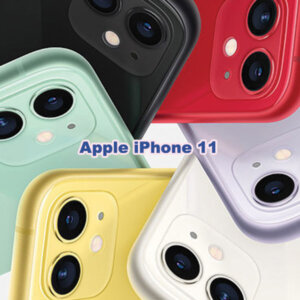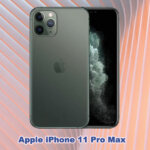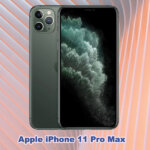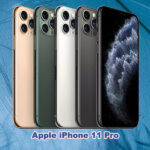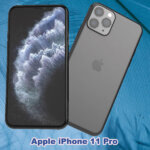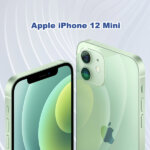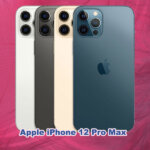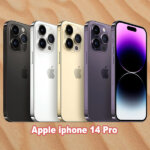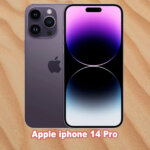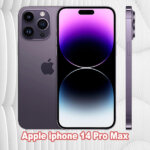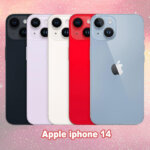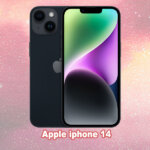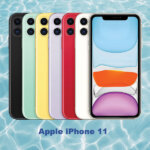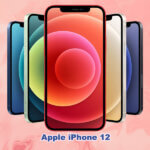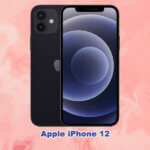Apple iPhone 11 Mobile Phone - Specifications
| Mobile Phone Deals ∇ |
 Apple iPhone 13 Apple iPhone 13 | ||||
64 GB | 64 GB | 64GB | 64 GB | 64 GB |
| 128 GB | 128 GB | 128 GB | 128 GB | 128 GB |
| 256 GB | 256 GB | 256 GB | 256 GB | 256 GB |
| 512 GB | 512 GB | 512 GB | x | x |
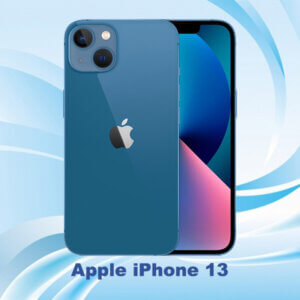 Apple iPhone 13 mini Apple iPhone 13 mini | ||||
| iPhone 12 64 GB | iPhone 12 mini 64 GB | iPhone 12 Pro 64 GB | iPhone 12 Pro Max 64 GB | iPad Pro 12.9 (2022) |
| 128 GB | 128 GB | 128 GB | 128 GB | iPad Pro 11 (2022) |
| 256 GB | 256 GB | 256 GB | 256 GB | iPad (2022) |
| x | x | 512 GB | 512 GB | iPad Air (2022) |
 Apple iPhone 13 Pro Apple iPhone 13 Pro | ||||
| iPhone 13 128 GB | iPhone 13 mini 128 GB | iPhone 13 Pro 128 GB | 128 GB | iPad mini (2021) |
| 256 GB | 256 GB | 256 GB | 256 GB | iPad 10.2 (2021) |
| 512 GB | 512 GB | 512 GB | 512 GB | iPad Pro 12.9 (2021) |
| x | x | 1 TB | 1 TB | iPad Pro 11 (2021) |
 Apple iPhone 13 Pro Max Apple iPhone 13 Pro Max | ||||
128 GB | iPhone 14 Plus 128 GB | 128 GB | 128 GB | iPad Air (2020) |
| 256 GB | 256 GB | 256 GB | 256 GB | iPad 10.2 (2020) |
| 512 GB | 512 GB | 512 GB | 512 GB | iPad Pro 12.9 (2020) |
| 1 TB | 1 TB | 1 TB | 1 TB | iPad Pro 11 (2020) |
| Model Number: | iPhone 11 |
| Version: | A2221 (International) , A2111 (USA, Canada) , A2223 (China, Hong Kong) |
| Released: | September, 2019 |
| SIM Card Type: | Single or Dual SIM (Nano-SIM ) |
| Network Included: | GSM / CDMA / HSPA / EVDO / LTE |
| 2G Network SIM 1: | 2G – GSM 850 / 900 / 1800 / 1900 |
| 2G Network SIM 2: | 2G – GSM 850 / 900 / 1800 / 1900 |
| 3G Network: | 3G – HSDPA 850 / 900 / 1700(AWS) / 1900 / 2100 |
| 4G Network: | Yes |
| 5G Network: | |
| Display Type: | Liquid Retina IPS LCD |
| Resolution (pixels): | 828 x 1792 pixels |
| Operating System: | iOS 13, upgradable to iOS 16.1 |
| Physical Weight: | 173 grams (6.10 ounces) |
| Screen Size: | 6.1 inches |
| Dimension: Height x Width x Depth | 150.9 x 75.7 x 8.3 mm (5.94 x 2.98 x 0.33 in) |
| RAM: | 4GB RAM |
| Internal Storage Capacity: | 64GB, 128GB, 256GB |
| Front Selfie Camera: | 12MP |
| Back Main Camera: | Dual 12MP camera system: Wide and Ultra Wide cameras |
| Wide: ƒ/1.6 aperture | |
| Ultra Wide: ƒ/2.4 aperture | |
| LED Flash: | Yes, HDR |
| Front Selfie Video: | 4K , 1080p HD video recording at 25 fps, 30 fps or 60 fps |
| Video: | 4K , 1080p HD video recording at 25 fps, 30 fps or 60 fps |
| Hardware Chipset: | Apple A13 Bionic (5 nm) |
| Motherboard CPU: | Hexa-core (2 x 3.23 GHz + 4 x 1.82 GHz) |
| Hardware GPU: | Apple GPU (4-core graphics) |
| Card Slot: | No |
| Loudspeaker: | Yes |
| Headphone Jack: | No |
| Connectivity Wi-Fi: | Wi-Fi 802.11 |
| Wi-Fi hotspot: | Yes |
| Wi-Fi Direct: | |
| Bluetooth: | 5.0, A2DP, LE |
| GPS Capacity with A-GPS, GLONASS, GALILEO, BDS: | Yes |
| NFC: | Yes |
| Infrared Port: | |
| Radio: | No |
| USB port / Type: | USB 2.0, Lightning |
| Fingerprint: | No, Face ID sensors |
| Accelerometer: | Yes |
| Gyro: | Yes |
| Proximity: | Yes |
| Compass: | Yes |
| Battery: | 3110 mAh, non-removable / built in |
| Color Options: | White, Black, Green, Red, Yellow, Purple |
| Other Features: | Aluminum frame, Corning scratch-resistant glass, Wireless Qi, Water resistant to a depth of 2 metres for up to 30 minutes, Splash, Water and Dust Resistant Rated IP68 |
The Apple iPhone 11 has a sleek and stylish design with dimensions of 150.9 x 75.7 x 8.3 mm (5.94 x 2.98 x 0.33 in). It is a compact device with rounded corners and an edge-to-edge display.
| Model : | iPhone 11 | iPhone 11 Pro | iPhone 11 Pro Max | Memory | iPhone 11 | iPhone 11 Pro | iPhone 11 Pro Max | iPhone 12 | |
| Display : | 6.1 inches | 5.8 inches | 6.5 inches | 64 GB | $750 | $780 | $920 | iPhone 12 Pro | |
| Camera : | 12 MP | 12 MP | 12 MP | 128 GB | $800 | $880 | $ 982 | iPhone 13 | |
| Battery : | 3110 mAh | 3046 mAh | 3969 mAh | 256 GB | $850 | $989 | $ 1082 | iPhone 13 Pro | |
| RAM : | 4 GB | 4 GB | 4 GB | 512 GB | $900 | $1,089 | $ 1182 | iPhone 14 |
Apple iPhone 11
The Apple iPhone 11 is a smartphone that was released in 2019. It is the successor to the iPhone XR and comes with a number of improvements and new features. The iPhone 11 has a 6.1-inch Liquid Retina IPS LCD display, which has a resolution of 828 x 1792 pixels and a pixel density of 326 pixels per inch. The display is protected by scratch-resistant glass and has an oleophobic coating to repel fingerprints.
The iPhone 11 is powered by Apple’s A13 Bionic chip, which is a hexa-core processor that includes two high-performance cores and four energy-efficient cores. The A13 Bionic chip is paired with an Apple-designed four-core GPU and 4GB of RAM. This hardware combination provides excellent performance, allowing the phone to handle even the most demanding tasks with ease.
The Apple iPhone 11 has a sleek and stylish design with dimensions of 150.9 x 75.7 x 8.3 mm (5.94 x 2.98 x 0.33 in). It is a compact device with rounded corners and an edge-to-edge display. The front and back of the phone are made of durable glass, while the frame is made of sturdy aluminum. The device has an IP68 rating for water and dust resistance, which means it can withstand immersion in up to 2 meters of water for up to 30 minutes.
The Apple iPhone 11 has a premium build quality with a combination of Corning-made glass on the front and back, and an aluminum frame that’s made from the 7000 series. The use of Corning-made glass ensures that the front and back of the phone are durable and scratch-resistant, while the aluminum frame provides structural integrity to the device.
The glass on the back of the iPhone 11 gives it a premium look and feel and is available in a range of colors including black, white, green, yellow, purple, and (PRODUCT)RED. The aluminum frame adds to the durability of the phone while keeping the weight in check.
The iPhone 11 is available in six different colors, including black, white, green, yellow, purple, and (PRODUCT)RED. The back of the phone has a glossy finish, and the camera module is positioned in the top left corner. The phone has a solid and comfortable grip, and the buttons are conveniently placed for easy access. The phone weighs 194g, which makes it comfortable to hold for extended periods.
The iPhone 11 has a dual-camera system, which includes a 12-megapixel wide-angle camera and a 12-megapixel ultra-wide-angle camera. The camera system also includes features like optical image stabilization, night mode, and 4K video recording at up to 60 frames per second. There is also a 12-megapixel front-facing camera, which supports features like portrait mode and 4K video recording at up to 60 frames per second.
The iPhone 11 runs on iOS 13, which is Apple’s latest mobile operating system at the time of release. The phone also includes features like Face ID for secure facial recognition, a variety of sensors including an accelerometer, gyroscope, proximity sensor, and compass, as well as support for wireless charging.
The iPhone 11 is available in six different colors: black, white, green, yellow, purple, and (PRODUCT)RED. It is also available in three different storage capacities: 64GB, 128GB, and 256GB.
Avoid paying Taxes and International postage delay
If you are looking for a new smartphone with cutting-edge features and performance, you might be interested in buying an iPhone 14 or iPhone 14 Plus. These are the latest models of Apple’s flagship device, which offer a stunning design, a powerful A16 chip, a ProMotion display with adaptive refresh rate, a cinematic video mode with Dolby Vision HDR, and an advanced camera system with 3x optical zoom and macro photography.
However, buying an iPhone 14 or iPhone 14 Plus in your country might not be the best option for you. Depending on where you live, you might face some disadvantages such as higher prices due to taxes and tariffs, limited availability due to supply chain issues or delayed launch dates, or compatibility issues due to different network standards or carrier policies.
Therefore, you might want to consider buying an iPhone 14 or iPhone 14 Plus from abroad and use it in your country. This way, you can potentially save money by taking advantage of lower prices in other markets, get your hands on the device sooner by ordering from countries where it is already released, and enjoy more freedom and flexibility by choosing an unlocked model that works with any network provider.
However, before you decide to buy an iPhone 14 or iPhone 14 Plus from abroad and use it in your country, there are some things you need to be aware of. First of all, you need to make sure that the model you buy is compatible with the network bands and frequencies used by your carrier in your country. Second of all, you need to check if there are any import duties or taxes that apply when you bring the device into your country. Third of all, you need to be prepared for possible warranty issues or customer service difficulties if you encounter any problems with your device.
Buying an iPhone 14 or iPhone 14 Plus from abroad and use it in your country can be a smart move if you do your research carefully and weigh the pros and cons. It can help you avoid paying extra taxes and waiting for long delays while enjoying a premium smartphone experience. However, it can also involve some risks and challenges that you need to be ready for. Ultimately, the choice is yours.
| Apple iPhone 11 | US$ (USA) | Canada | Germany | France | Italy | Austria | Netherland | UK | MENA |
| 64GB | $750 | $750 | €700 | €700 | €700 | €700 | €700 | £700 | $750 |
| 128GB | $800 | $800 | €800 | €1050 | €1050 | €1050 | €1050 | £900 | $800 |
| 256GB | $850 | $850 | €850 | €1100 | €1100 | €1100 | €1100 | £950 | $850 |
| 512GB | $900 | $900 | €900 | €1200 | €1200 | €1200 | €1200 | £1050 | $900 |
| iPhone 11 Pro | US$ (USA) | Canada | Germany | France | Italy | Austria | Netherland | UK | MENA |
| 64GB | $750 | $750 | €700 | €700 | €700 | €700 | €700 | £700 | $750 |
| 128GB | $800 | $800 | €800 | €1050 | €1050 | €1050 | €1050 | £900 | $800 |
| 256GB | $850 | $850 | €850 | €1100 | €1100 | €1100 | €1100 | £950 | $850 |
| 512GB | $900 | $900 | €900 | €1200 | €1200 | €1200 | €1200 | £1050 | $900 |
| iPhone 11 Pro Max | US$ (USA) | Canada | Germany | France | Italy | Austria | Netherland | UK | MENA |
| 64GB | $750 | $750 | €700 | €700 | €700 | €700 | €700 | £700 | $750 |
| 128GB | $800 | $800 | €800 | €1050 | €1050 | €1050 | €1050 | £900 | $800 |
| 256GB | $850 | $850 | €850 | €1100 | €1100 | €1100 | €1100 | £950 | $850 |
| 512GB | $900 | $900 | €900 | €1200 | €1200 | €1200 | €1200 | £1050 | $900 |
Apple iPhone 11 Display type
The Apple iPhone 11 features a Liquid Retina IPS LCD display with a size of 6.1 inches and a resolution of 828 x 1792 pixels. The display has a pixel density of approximately 326 pixels per inch (PPI) and supports a wide color gamut with True Tone technology for accurate color representation.
The screen is also equipped with Haptic Touch technology, which allows for touch feedback that responds to the pressure of the user’s finger. Additionally, the display has a maximum brightness of 625 nits, making it easy to view even in bright outdoor conditions.
The phone has a 90.3% screen-to-body ratio, which means the display covers most of the front surface of the phone. The display is protected by Corning-made glass, which is durable and scratch-resistant. Overall, the display of the iPhone 11 provides clear, vibrant, and immersive viewing experiences for its users.
The Apple iPhone 11 features a 6.1-inch Liquid Retina IPS LCD display with a resolution of 828 x 1792 pixels and a 19.5:9 aspect ratio, resulting in a pixel density of approximately 326 pixels per inch. The display also has a maximum brightness of 625 nits.
To protect the display from scratches and minor impacts, it comes with scratch-resistant glass. This adds an additional layer of durability to the phone, ensuring that the display can withstand everyday use without getting damaged easily.
Apple iPhone 11 Version
The Apple iPhone 11 is available in three different versions or models: A2221, A2111, and A2223. These models are designed for different regions around the world and come with slightly different specifications to comply with the specific cellular networks and bands used in those regions.
The A2221 is the international version of the iPhone 11, which is sold in many countries around the world. It is compatible with a wide range of cellular networks and bands, making it a versatile choice for those who travel frequently. The A2221 also comes with support for dual-SIM, allowing users to use two different phone numbers on the same device.
The A2111 is the version of the iPhone 11 that is sold in the United States, Canada, Puerto Rico, and the U.S. Virgin Islands. It is designed to work with the cellular networks and bands used in these regions and comes with support for dual-SIM through a physical nano-SIM and an eSIM.
The A2223 is the version of the iPhone 11 that is sold in China and Hong Kong. It comes with support for dual-SIM through a physical nano-SIM and an eSIM and is designed to work with the specific cellular networks and bands used in these regions.
All three versions of the iPhone 11 come with the same hardware and software specifications, including the A13 Bionic chip, a 6.1-inch Liquid Retina display, and a dual-camera system. The differences lie primarily in their cellular network compatibility and dual-SIM capabilities, as well as any regulatory and legal requirements for each region.
Apple iPhone 11 back main camera
The Apple iPhone 11 features a dual-lens rear camera system that comprises a 12-megapixel (MP) wide lens and a 12-MP ultra-wide lens. The wide lens has an f/1.8 aperture, a 26mm focal length, and 1/2.55″ sensor size, making it capable of capturing high-quality images in low-light conditions. It also has 1.4µm pixels, which help to improve image quality and reduce noise.
The wide lens features dual-pixel phase detection autofocus (PDAF) and optical image stabilization (OIS), which allow for sharper images and smoother video capture. The PDAF technology helps to quickly and accurately focus on the subject, while the OIS helps to stabilize the camera and reduce blur caused by camera shake.
In addition to the wide lens, the iPhone 11 also features a 12-MP ultra-wide lens with an f/2.4 aperture, a 120˚ field of view, and a 13mm focal length. The ultra-wide lens lets you capture more of the scene in a single shot, making it ideal for landscape and architectural photography.
The Apple iPhone 11 is equipped with a dual rear camera system consisting of a 12-megapixel wide lens and a 12-megapixel ultrawide lens. The main 12-megapixel wide lens has an aperture of f/1.8 and a focal length of 26mm, with 1/2.55″ sensor size and 1.4µm pixel size. It features dual-pixel phase detection autofocus (PDAF) and optical image stabilization (OIS) to capture clear and stable photos and videos.
The second 12-megapixel ultrawide lens has an aperture of f/2.4 and a focal length of 13mm, with a 1/3.6″ sensor size. It offers a 120-degree field of view, allowing users to capture a wider angle of view than the main lens. Together, these two lenses offer users more creative flexibility to capture different types of photos and videos.
In addition to the dual lenses, the iPhone 11’s rear camera system is also equipped with advanced features such as dual-LED dual-tone flash, which provides more accurate color rendering when taking flash photography. The camera also features HDR (High Dynamic Range) technology, which captures photos with greater detail and more vibrant colors by merging multiple exposures into one image.
The camera’s HDR capabilities extend to panorama mode as well, enabling users to capture wide panoramic shots with improved dynamic range. Overall, the Apple iPhone 11’s rear camera system is a versatile and powerful tool for capturing high-quality photos and videos.
The Apple iPhone 11 features a dual rear camera system, consisting of a 12 MP wide-angle lens and a 12 MP ultra-wide-angle lens. The main camera has an aperture of f/1.8 and a focal length of 26mm, while the ultra-wide-angle camera has an aperture of f/2.4 and a focal length of 13mm.
In terms of features, the iPhone 11’s back camera system is equipped with Dual-LED dual-tone flash, which helps to illuminate subjects in low-light conditions. It also supports HDR (High Dynamic Range) photography, which allows for a wider range of colors and tones to be captured in a single image.
The camera system also supports 4K video recording at 24, 30, or 60 frames per second (fps), as well as 1080p video at 30, 60, 120, or 240 fps. Additionally, the camera system supports stereo sound recording, which captures high-quality audio to accompany the video. Overall, the iPhone 11’s back camera system is capable of producing high-quality images and videos in a variety of conditions.
Apple iPhone 11 front selfie camera
The Apple iPhone 11 features a front-facing TrueDepth camera system with a single 12 MP lens. The selfie camera has an aperture of f/2.2 and a wide 23mm lens, making it ideal for taking group selfies and capturing more of your surroundings in the frame.
The front camera also includes advanced technologies such as SL 3D (structured light 3D) which uses infrared light to create a depth map of your face, enabling Face ID facial recognition for secure unlocking of your device.
Other features of the front camera include the ability to capture HDR (high dynamic range) photos for better detail in both bright and dark areas of the image, as well as portrait mode with advanced bokeh and depth control for stunning portrait photos with blurred backgrounds.
The front camera can also record high-quality video at up to 4K resolution at 60 frames per second and 1080p resolution at up to 120 frames per second. The camera includes stereo sound recording for improved audio quality during video recording. Additionally, the front camera can also record slow-motion video at up to 120 frames per second for creative and dramatic effects.
The Apple iPhone 11 comes with a front-facing selfie camera that is a single 12-megapixel lens with an aperture of f/2.2 and a focal length of 23mm (wide). It also features a SL 3D camera for depth sensing and biometric facial recognition.
In terms of video recording capabilities, the front-facing camera can shoot 4K videos at 24, 30, and 60 frames per second (fps) as well as 1080p videos at 30, 60, and 120 fps. It also features gyro-electronic image stabilization (EIS) to keep your footage stable and smooth.
Additionally, the front-facing camera on the iPhone 11 comes with the ability to capture HDR (High Dynamic Range) photos. This feature helps to balance the exposure in your photos, resulting in better details in both the bright and dark areas of your shots.
Apple iPhone 11 CPU and GPU
The Apple iPhone 11 is powered by a hexa-core A13 Bionic chip, which features two high-performance cores called Lightning and four efficiency cores called Thunder. The Lightning cores are clocked at 2.65 GHz and handle the phone’s most demanding tasks, while the Thunder cores are clocked at 1.8 GHz and handle less intensive tasks to save battery life. The A13 Bionic chip is built on a 7nm process, which makes it more power-efficient and faster than the previous A12 Bionic chip found in the iPhone XR. It also includes a new Neural Engine that can perform up to 1 trillion operations per second, allowing for faster and more advanced machine learning and augmented reality applications. The A13 Bionic chip helps to provide a smooth and snappy performance on the iPhone 11, making it capable of handling even the most demanding apps and games.
The Apple iPhone 11 is equipped with the Apple-designed A13 Bionic chip which features a fourth-generation Neural Engine for advanced machine learning. It includes an integrated Apple GPU with 4 cores, which provides efficient and high-performance graphics processing for a smooth and immersive user experience. The GPU is optimized for handling complex tasks such as gaming, augmented reality (AR), and video editing, as well as providing improved power efficiency. The GPU’s performance is further enhanced by the advanced thermal management system on the iPhone 11, which ensures sustained high performance even under heavy loads. Overall, the A13 Bionic chip and the Apple GPU make the iPhone 11 a powerful and capable device for a wide range of applications.
Apple iPhone 11 sensors
The Apple iPhone 11 is equipped with several sensors that allow for advanced functionality and user experience.
One of the key sensors on the iPhone 11 is Face ID, which uses facial recognition technology to unlock the device and authenticate secure transactions. This sensor uses advanced algorithms and depth-sensing technology to create a detailed 3D map of the user’s face, ensuring secure and reliable authentication.
The accelerometer and gyro sensors work together to provide the device with information on its orientation and movement. This information is used to adjust the display orientation and enable features such as shake to undo or shake to shuffle.
The proximity sensor detects when the phone is near the user’s ear during a call and will turn off the display to save battery life and prevent accidental touch inputs.
The compass sensor allows the phone to detect its orientation and heading, which can be used for navigation and mapping applications.
The barometer sensor can measure changes in air pressure, which can be used to determine altitude and provide more accurate location data.
In addition to these sensors, the iPhone 11 also includes Ultra Wideband (UWB) support. This technology uses radio waves to accurately measure distance between devices and can be used for features such as AirDrop prioritization and more precise location sharing.
Apple iPhone 11 Battery
The Apple iPhone 11 is powered by a built-in lithium-ion battery with a capacity of 3110 mAh. This battery is non-removable and has a rated energy output of 11.91 Wh. The battery is designed to provide a talk time of up to 17 hours, internet use of up to 10 hours, and video playback of up to 10 hours.
The iPhone 11 also supports fast charging, which allows you to charge your device up to 50% in just 30 minutes using an 18W or higher power adapter (sold separately). It also supports wireless charging with Qi-certified chargers.
The device is equipped with an energy-efficient A13 Bionic chip that helps to optimize battery life. The chip uses machine learning to understand your usage patterns and adapts the performance of the phone accordingly to conserve battery power. Additionally, the phone’s operating system, iOS, includes features like low power mode and battery health management, which help to further optimize battery life and prolong the overall lifespan of the battery.
Apple iPhone 11 Charging wired / wireless
The Apple iPhone 11 supports wired and wireless charging. Wired charging is done through the Lightning port on the bottom of the phone and supports Power Delivery 2.0 technology. With a compatible charger, the iPhone 11 can charge up to 50% in just 30 minutes.
Wireless charging on the iPhone 11 is done through the Qi wireless charging standard. This allows the phone to be charged by placing it on a compatible wireless charging pad. The maximum charging speed for wireless charging on the iPhone 11 is 7.5 watts, which is slightly slower than wired charging.
The iPhone 11 also supports “fast charging,” which allows the phone to charge up to 50% in just 30 minutes when using a compatible 18W charger. However, the fast charging cable and power adapter are not included with the phone and must be purchased separately.
The iPhone 11 also includes a feature called “optimized battery charging” which uses machine learning to learn from your daily charging routine and adjust the charging speed accordingly to maximize battery lifespan. This feature can be turned on or off in the phone’s settings.
Trademark Disclaimer:
All trademarks, logos, and brand names are the property of their respective owners. All company, product, and service names used in this website are for identification purposes only. Use of these names trademarks, and brands do not imply endorsement.
Apple iPhone 11 Pro, Apple iPhone 11 Pro Max, Apple iPhone 12, Apple iPhone 12 mini, Apple iPhone 12 Pro, Apple iPhone 12 Pro Max, Apple iPhone 13, Apple iPhone 13 Mini, Apple iPhone 13 Pro, Apple iPhone 13 Pro Max, Apple iPhone 14, Apple iPhone 14 Plus, Apple iPhone 14 Pro, Apple iPhone 14 Pro Max, Apple iPhone 15, Apple iPhone 15Plus, Apple iPhone 15 Pro, Apple iPhone 15 Pro Max, Apple iPhone SE 2020, Apple iPhone SE 2022, Apple iPhone 16,



